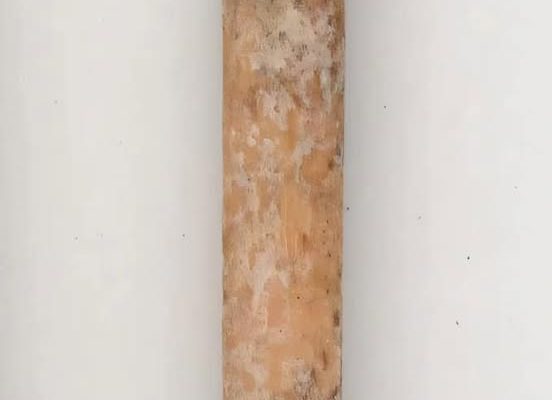archaeologists announced a groundbreaking discovery at the La Prele Mammoth site in Wyoming: 32 bone needle fragments dating back approximately 13,000 years. Unearthed nearly 15 feet underground in an area associated with the Clovis culture, these delicate tools provide an extraordinary window into the lives of some of the earliest inhabitants of North America. Known primarily for their distinctive stone tools and mammoth hunting, the Clovis people are now revealed as resourceful artisans who adapted to the harsh conditions of the last Ice Age with remarkable ingenuity.
The La Prele Mammoth Site: A Treasure Trove of Prehistoric Life
The La Prele Mammoth site has long been a focal point for archaeologists studying the Clovis culture. Situated in eastern Wyoming, the site has yielded an array of artifacts, including stone points, mammoth bones, and now, these bone needle fragments. The needles were found in close association with mammoth remains, suggesting a link between their creation and the processing of these massive Ice Age creatures.
What makes the discovery particularly significant is the depth at which these artifacts were found—15 feet below the surface. This depth not only highlights the passage of time but also points to the exceptional preservation of the site, providing researchers with a rare glimpse into the lives of the Clovis people.
The Role of Bone Needles in Clovis Survival
The discovery of bone needles reshapes our understanding of the Clovis culture. While the Clovis are best known for their stone spear points, often associated with hunting mammoths and other megafauna, these needles highlight another essential aspect of their survival: clothing and shelter.
Bone needles, crafted from the bones of animals such as mammoths, were likely used to sew garments and construct durable coverings for shelters. In the freezing conditions of the Ice Age, clothing was essential not only for protection but also for mobility. The ability to move across vast, frozen landscapes in search of game and resources would have been vital for survival.
These tools also hint at the Clovis people’s skill in working with various materials. Creating a needle required precision and patience, as well as a deep understanding of the properties of bone. The small size and intricate design of these tools suggest that the Clovis people were adept at fine motor skills, challenging the stereotype of early humans as solely focused on hunting and survival.
Innovation and Adaptation: Hallmarks of the Clovis Culture
The Clovis culture, which flourished across North America around 13,000 years ago, is characterized by its adaptability and innovation. The discovery of these bone needles underscores the ingenuity of the Clovis people, who not only mastered the art of hunting large game but also developed sophisticated tools to meet their everyday needs.
The needles’ presence at a mammoth site suggests they may have been used during butchering or hide processing, possibly to stitch hides into clothing or coverings. This connection between hunting and crafting reflects a holistic approach to resource use, where no part of an animal was wasted.
Moreover, the discovery expands our understanding of Clovis technology. While their stone points are celebrated as some of the earliest examples of human craftsmanship in the Americas, the needles remind us that the Clovis toolkit was far more diverse.
A Window Into Ice Age Society
Beyond their functional purpose, the bone needles offer insights into the social and cultural aspects of Clovis life. The act of sewing and crafting likely played a role in community life, with knowledge passed down through generations. These tools may have been used not just for survival but also for creating items with symbolic or aesthetic value, such as decorated garments or ceremonial objects.
The Clovis people were part of a larger network of early human populations that spread across the Americas during the late Pleistocene. The presence of bone needles suggests that these groups shared knowledge and adapted similar technologies to their environments.
Challenges of Interpretation
Despite the significance of the discovery, interpreting bone needles from the Ice Age poses challenges. The fragility of bone artifacts makes them rare finds, and much of their original context can be lost over time. Additionally, the exact use of these needles remains speculative, as the organic materials they once worked with—such as leather or sinew—have long since decayed.
Nonetheless, the La Prele Mammoth site offers a remarkably well-preserved context that allows researchers to piece together the story of the Clovis people with increasing precision.
The Broader Implications of the Discovery
The discovery of the bone needles at La Prele enriches our understanding of the Clovis culture and the broader story of human migration and adaptation. These tools highlight the complexity of early American societies and challenge the notion of prehistoric people as merely subsisting. Instead, they were innovators who used every resource available to them to thrive in some of the most challenging environments imaginable.
Conclusion
The bone needles from the La Prele Mammoth site stand as silent witnesses to the ingenuity and resilience of the Clovis people. These delicate tools remind us that survival during the last Ice Age required more than brute force; it demanded creativity, adaptability, and a deep understanding of the natural world.
As archaeologists continue to study the La Prele Mammoth site, these needles—and the stories they tell—promise to reshape our understanding of one of North America’s earliest cultures. By bridging the gap between ancient and modern humanity, they invite us to marvel at the resourcefulness that has always defined us as a species.



